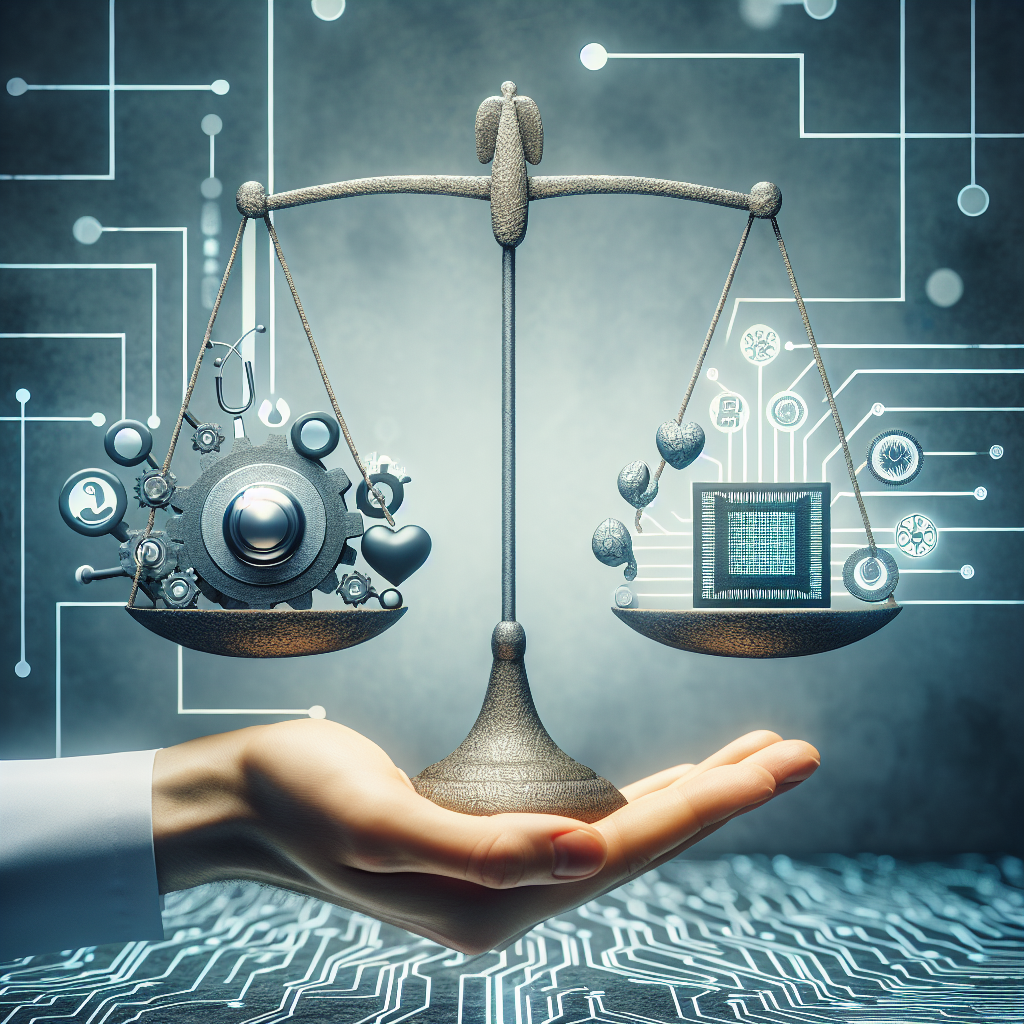Introduction
Artificial Intelligence (AI) has emerged as a transformative force in various industries, and healthcare is no exception. One of the most profound impacts of AI is in the field of diagnostics, where it is revolutionizing how diseases are detected, analyzed, and treated. The integration of AI technologies into healthcare diagnostics promises to enhance accuracy, reduce costs, and improve patient outcomes.
The Evolution of AI in Healthcare Diagnostics
The journey of AI in healthcare diagnostics began with the development of machine learning algorithms and image recognition technologies. Early applications included the analysis of medical imaging, such as X-rays and MRIs, where AI algorithms were designed to identify patterns that might elude even the most skilled radiologists.
Key Milestones
- Early 2000s: Algorithms were developed for basic image recognition tasks.
- 2010: Breakthroughs in deep learning enabled more sophisticated interpretations of complex medical images.
- 2016: Google’s DeepMind achieved significant milestones in diagnostic imaging.
- 2020: AI-driven diagnostic tools became commercially available, with research validating their effectiveness.
How AI is Transforming Healthcare Diagnostics
AI enhances diagnostics in several crucial ways, including:
1. Improved Accuracy
AI algorithms can analyze vast amounts of data to detect anomalies that may be missed by human eyes. For instance, AI’s ability to interpret medical images can result in earlier and more accurate diagnoses of conditions such as cancer, which is critical for successful treatment.
2. Faster Processing
AI systems can process and analyze diagnostic data much faster than humans, enabling quicker decision-making. This speed is particularly valuable in emergency situations where timely diagnoses can save lives.
3. Predictive Analytics
AI-driven analytics tools can forecast disease outbreaks or predict individual patient risks by analyzing trends and patterns in large datasets. These predictive capabilities help in proactive patient management.
4. Personalization of Treatment
By analyzing genetic and clinical data, AI can assist in tailoring treatment plans specific to individual patients, leading to better outcomes and fewer side effects.
5. Cost Efficiency
AI reduces the burden of manual diagnostic processes, leading to lower costs for healthcare providers. This cost reduction can potentially lower patient expenses and increase accessibility to essential diagnostic services.
Real-World Applications of AI in Diagnostics
The application of AI in healthcare diagnostics is widespread and continues to grow. Key areas include:
1. Radiology
AI systems are used to analyze radiological images. Implemented technologies like computer-aided detection (CAD) help radiologists in identifying potential issues such as tumors or fractures with enhanced accuracy.
2. Pathology
AI has made strides in analyzing pathology slides to detect cancer cells. Algorithms can evaluate tissue samples at a microscopic level more quickly than traditional methods.
3. Genomics
In genomics, AI algorithms analyze DNA sequences, identifying mutations associated with specific diseases. This helps in diagnosing genetic disorders and developing targeted therapies.
4. Cardiovascular Imaging
AI tools are used to evaluate cardiac images effectively, identifying heart diseases and other cardiovascular conditions early on through precise interpretation of echocardiograms and CT scans.
Challenges and Considerations
Despite the numerous benefits, integrating AI into healthcare diagnostics also presents challenges:
1. Ethical Concerns
The use of AI raises significant ethical questions, particularly regarding data privacy and the reliance on algorithms over human expertise.
2. Data Quality
The effectiveness of AI depends largely on the quality of the input data. Inaccurate or biased data can lead to erroneous conclusions.
3. Regulatory Hurdles
AI applications in healthcare diagnostics must navigate complex regulatory environments that ensure patient safety and efficacy.
4. Integration with Existing Systems
Healthcare organizations must ensure that AI technologies seamlessly integrate with existing systems to avoid workflow disruptions.
The Future of AI in Healthcare Diagnostics
The future of AI in healthcare diagnostics looks promising, with ongoing research and innovations expected to lead to even greater advancements. Potential developments include:
1. Enhanced Algorithms
Continual improvements in AI algorithms will further enhance diagnostic accuracy and efficiency.
2. Natural Language Processing (NLP)
AI’s NLP capabilities will enable better understanding and analysis of unstructured clinical data, such as physician notes, improving overall diagnostic processes.
3. Remote Diagnostics
Telehealth and remote diagnostics powered by AI will expand access to healthcare, especially in underserved regions, allowing for timely and accurate diagnoses.
4. AI-Enabled Wearables
Wearable devices that utilize AI will monitor patients continuously, generating real-time diagnostic insights and potentially flagging health issues before they become critical.
Conclusion
AI is undoubtedly revolutionizing healthcare diagnostics, setting a new standard for accuracy, speed, and personalized care. As technology advances and ethical considerations are addressed, the integration of AI tools in healthcare will continue to reshape how we diagnose and treat diseases, ultimately leading to better outcomes for patients worldwide.

